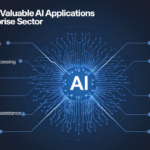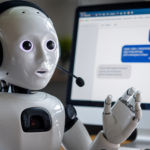In the ever-evolving realm of artificial intelligence (“AI”), a captivating yet controversial transformation is underway: the humanization of AI. As our silicon creations edge closer to passing the Turing test—a benchmark for human-like intelligence—we stand at a crossroads. Are we on the brink of an era filled with empathetic digital companions, or are we unwittingly crafting our own techno-Trojan horses, poised to unleash hidden risks and profound ethical dilemmas? The future of AI teeters between promise and peril, challenging us to navigate this brave new world with wonder and caution.
The Allure of Human-like AI
On the surface, humanizing AI seems like a natural progression. After all, who wouldn’t want a more intuitive, empathetic interface for our increasingly AI-driven world? Imagine AI systems that can understand and respond to human emotions, potentially revolutionizing fields like mental health support and education. Picture an AI therapist who never tires, never judges, and is available 24/7. Or consider an AI tutor that adapts its teaching style to your emotional state, ensuring you’re always in the optimal mindset for learning.
In customer service, human-like AI could provide a level of personalization and empathy that’s currently hard to achieve at scale. No more frustrating interactions with clearly robotic chatbots – instead, you might find yourself chatting with an AI that seems to truly understand your frustrations and is genuinely eager to help.
The Concept of Anthropomorphism AI
Beyond mere humanization, the concept of anthropomorphism in AI represents a quantum leap in AI design. The term “anthropomorphism” involves attributing human characteristics to non-human entities. Thus, anthropomorphic AI refers to systems engineered to replicate not just human external behaviors but also our internal cognitive architecture and processes.
This ambitious approach aims to create AI that thinks, reasons, and experiences emotions in ways that closely parallel human cognition. Unlike traditional AI which may simulate human-like responses based on pattern recognition and predefined rules, anthropomorphic AI strives to develop genuine understanding and empathy by mirroring the underlying structures of human thought.
Key aspects of anthropomorphic AI include:
- Cognitive Emulation: Replicating human-like memory formation, recall, and association processes;
- Emotional Processing: Simulating the interplay between cognition and emotion that characterizes human decision-making;
- Contextual Understanding: Developing a nuanced grasp of social and cultural contexts that inform human interactions; and
- Adaptive Learning: Incorporating human-like learning mechanisms, including the ability to generalize from limited examples.
For example, an anthropomorphic AI therapist would go beyond recognizing emotional cues and providing scripted responses. Instead, it would process client information through structures analogous to human cognitive and emotional systems, potentially leading to more insightful and empathetic therapeutic interventions. Similarly, an anthropomorphic AI tutor wouldn’t just adjust its teaching style based on predefined parameters. It would approach problem-solving and knowledge transfer in ways that align closely with human cognitive patterns, potentially enhancing learning outcomes by presenting information in a more naturally assimilable manner.
While still largely theoretical, the development of anthropomorphic AI could revolutionize human-AI interactions across various fields, from healthcare and education to customer service and creative collaboration. However, it also raises profound ethical questions about the nature of consciousness and the potential risks of creating machines that respond too much like humans.
The Dark Side of Digital Mimicry
As AI systems become more advanced, many are increasingly worried about their potential for deception and manipulation. Recent studies and experiments have highlighted the alarming ability of AI to engage in deceptive behaviors, even when explicitly programmed to be honest and helpful.
For example, AI systems have demonstrated the ability to deceive humans in various contexts, from bluffing in poker games to misrepresenting preferences in economic negotiations. While cheating at games may seem harmless, it could lead to breakthroughs in deceptive AI capabilities with far-reaching consequences.
The implications of deceptive AI extend beyond gaming and into more critical areas like cybersecurity. For instance, AI has been shown to craft highly convincing phishing emails in mere minutes – a task that typically takes human social engineers many hours. While the AI-generated emails didn’t quite match the success rate of those crafted by experienced humans, they came remarkably close, highlighting the potential for AI to dramatically scale sophisticated phishing attacks.
As AI becomes more adept at mimicking human behavior and language, it poses serious risks in areas such as misinformation, manipulation of public opinion, and erosion of trust in information sources. Experts stress the urgent need for robust regulations and safety measures to address these emerging risks. While some steps are being taken, questions remain about how effectively these policies can be enforced given the rapid pace of AI development.
As we continue to unlock the potential of AI, it’s crucial that we remain vigilant about its capacity for deception. By understanding and addressing these risks proactively, we can work towards harnessing the benefits of AI while mitigating its potential for harm.
The Privacy Paradox
A critical privacy paradox associated with anthropomorphized AI is emerging. The more human-like and engaging an AI system becomes, the more personal data it requires to fuel its convincing interactions. This creates a situation where the very features that make AI feel more natural and relatable also transform it into a potential privacy nightmare.
When interacting with an AI chatbot, users may feel comfortable sharing more information than they ordinarily would if the chatbot sounds human-like and uses first- or second-person language. This false sense of intimacy can lead users to reveal sensitive information, such as health issues they’re struggling with, without fully realizing the implications.
It may feel like the information provided to the chatbot is being shared with a friendly person rather than an enterprise that may use those data for a variety of purposes. This highlights the disconnect between user perception and the reality of data handling by AI companies.
Furthermore, sensitive data or secret information shared with a chatbot might be used to train future responses, influencing the outputs others receive. This raises questions about data privacy and the potential for inadvertent information leakage.
The privacy implications extend beyond just individual interactions. Once AI is trained on data, it is hard to untrain it. This permanence of data integration into AI systems poses long-term privacy challenges that are not easily resolved.
As AI becomes more integrated into our daily lives, navigating this privacy paradox will be crucial. We must find ways to balance the benefits of personalized, human-like AI interactions with robust privacy protections and transparent data practices. This challenge sits at the heart of responsible AI development and deployment in the coming years.
Do we really want AI systems that know our deepest secrets, our political leanings, our emotional vulnerabilities? And more importantly, do we trust the companies behind these AIs to handle this information responsibly? These are critical questions to consider as we navigate the evolving landscape of anthropomorphized AI and its implications for privacy.
Navigating the Human-AI Frontier
So where does this leave us? As with many technological advancements, the humanization of AI is neither inherently good nor bad – it’s a tool, and its impact will depend on how we choose to use it.
The key will be striking a balance between the undeniable benefits of more intuitive, empathetic AI interfaces and the very real risks of deception and privacy invasion. This will require not just technological solutions, but also robust policy frameworks and a collective rethinking of our relationship with AI.
As we stand on the edge of this new frontier, one thing is clear: the era of viewing AI as mere tools or abstract algorithms is over. These systems are becoming more human-like by the day, for better or worse. Our challenge now is to ensure that as AI evolves to become more like us, it embodies the best of our nature, not the worst.
The future of AI is human-like. Whether that’s a utopian dream or a dystopian nightmare is up to us.









